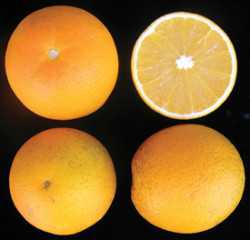New Citrus Fruit Success Requires Team Effort

Traditionally, if a new citrus selection appeared to have promise, it would be propagated onto numerous rootstocks and planted in each of Florida’s growing regions for long-term evaluation. The advantage of this process is that growers could eventually make planting decisions based on a solid library of data about the variety’s performance in a range of conditions. The downside is it often took 15 to 20 years to complete the process.
Intensifying pressure from disease and foreign and domestic competition make it necessary to reduce the time necessary to bring promising new fresh citrus varieties to nurseries and growers. The shorter anticipated life for trees being planted today compounds the risk of planting citrus. Additionally, there is a seemingly steady stream of new consumer friendly citrus varieties reaching supermarket shelves from the world’s other citrus production areas. Nurseries and growers need new tools to improve the competitive position of Florida’s fresh citrus segment.
Growers need more competitive varieties ASAP, but can ill afford to take a commercial risk on a new variety for which little data is available. The variety pipelines at the breeding programs are going to produce dozens of options in the coming years. A system is needed to bring these varieties to growers through interested nurseries providing growers an opportunity to test new material while gathering data, minimizing risk, and accelerating the release process.
Conceptual Solution
The New Varieties Development & Management Corp. (NVDMC) has supported USDA-Agricultural Research Service (ARS) and UF/IFAS in the development of early evaluation models that will help address this need. While both organizations needed a model that best fits its breeding program and methods of managing intellectual property, they were receptive to the idea of creating an early evaluation system whereby varieties could be field tested by growers in real-world commercial settings. The intent is to harvest several crops, evaluate data, and make much earlier decisions than were previously possible. Both of these models are works in progress, but it is encouraging to see the national and state breeding programs adapting their release strategies to meet the needs of the industry.
USDA-ARS Model
USDA-ARS has a stable of advanced easy peel selections, in addition to new crosses that have not yet fruited. ARS is working to develop seedless variants of these selections. If successful, rather than initiate a range of traditional field trials, a method is needed to transition this material to the American citrus growers for evaluation. ARS developed a model that moves its most advanced selections to interested growers through a sponsoring organization. In Florida, NVDMC has registered with ARS to seek participating growers to establish field trials and assist in the evaluation process (through transfer agreements). Nurseries were invited to participate (with signed agreements), providing an opportunity to establish a budwood source should the variety prove successful. To date, three varieties have been offered to the industry in this manner: U.S. Seedless Surprise (just now emerging from budwood quarantine); the U.S. Early Pride low-seeded tangerine (now in the patent stage); and the U.S. Seedless Pineapple Orange. NVDMC remains hopeful this model will be used extensively in the coming years.
Early Evaluation Opportunity
Though UF/IFAS accepted and adopted an early release program called the EEO (Early Evaluation Opportunity) three years ago, varieties have not yet been released through this program. The new selections have been moving forward according to plan through the Division of Plant Industry Parent Tree Program, to produce pathogen-free, budwood-source trees. Likewise, the breeders have been very busy documenting botanical characteristics to pursue patent protection of the new selections prior to their release.
While working toward EEO releases, IFAS staff recently brought forward a new and creative way of expanding the EEO concept that would make it affordable for more growers to participate, while encouraging early evaluation plantings in a wide range of growing conditions. The details of this plan are still in development through discussions within IFAS and with industry representatives. What can be stated is that IFAS is exploring novel ways of bringing promising new citrus selections to the growers for planting and evaluation as a means of accelerating the release process, gathering real-world data early in the process, and tapping into the expertise of the industry for input relevant to release decisions. Nurseries will be an integral partner in this process, and the large number of selections in the pipeline should leave room for all interested nurseries to participate.










